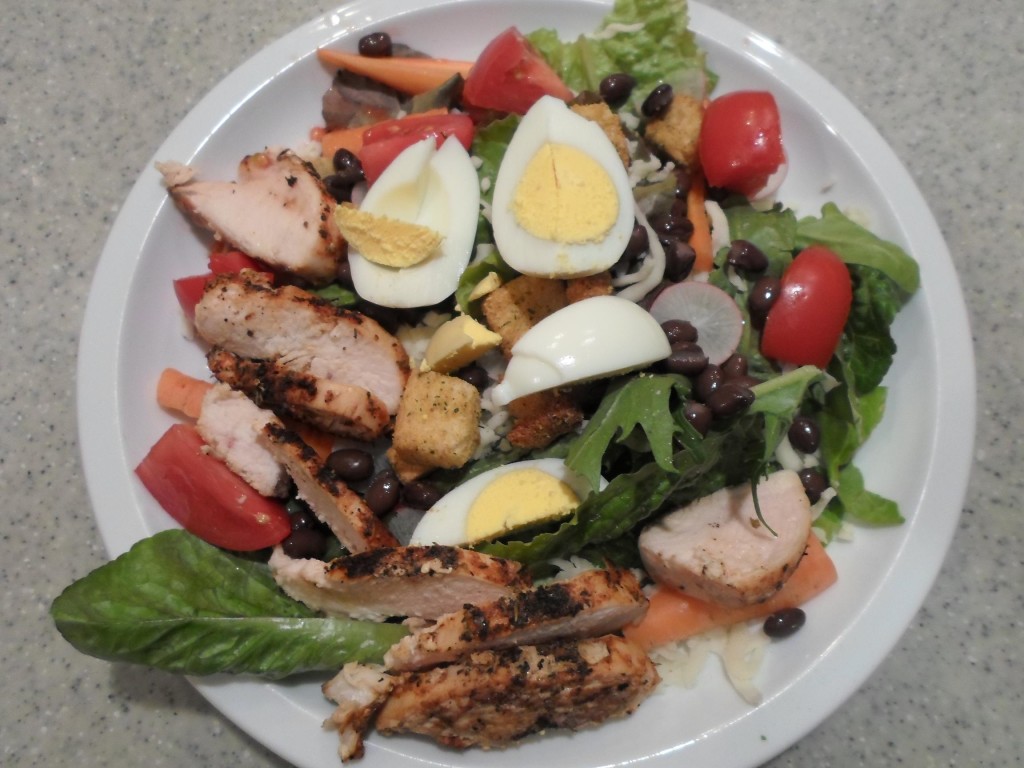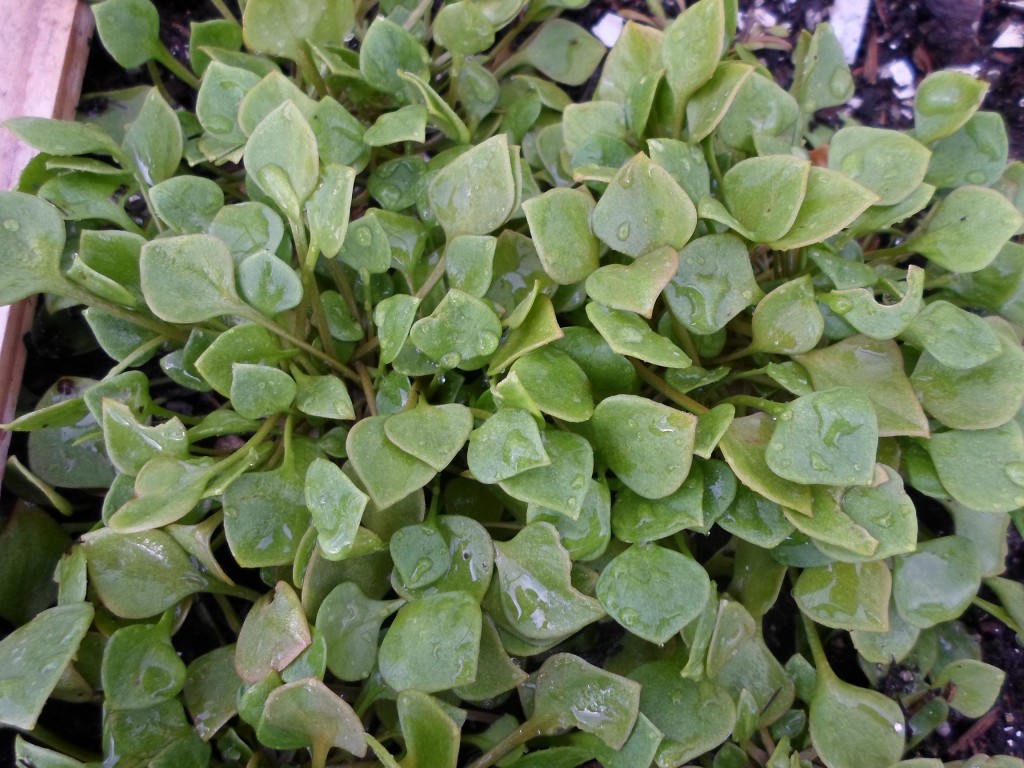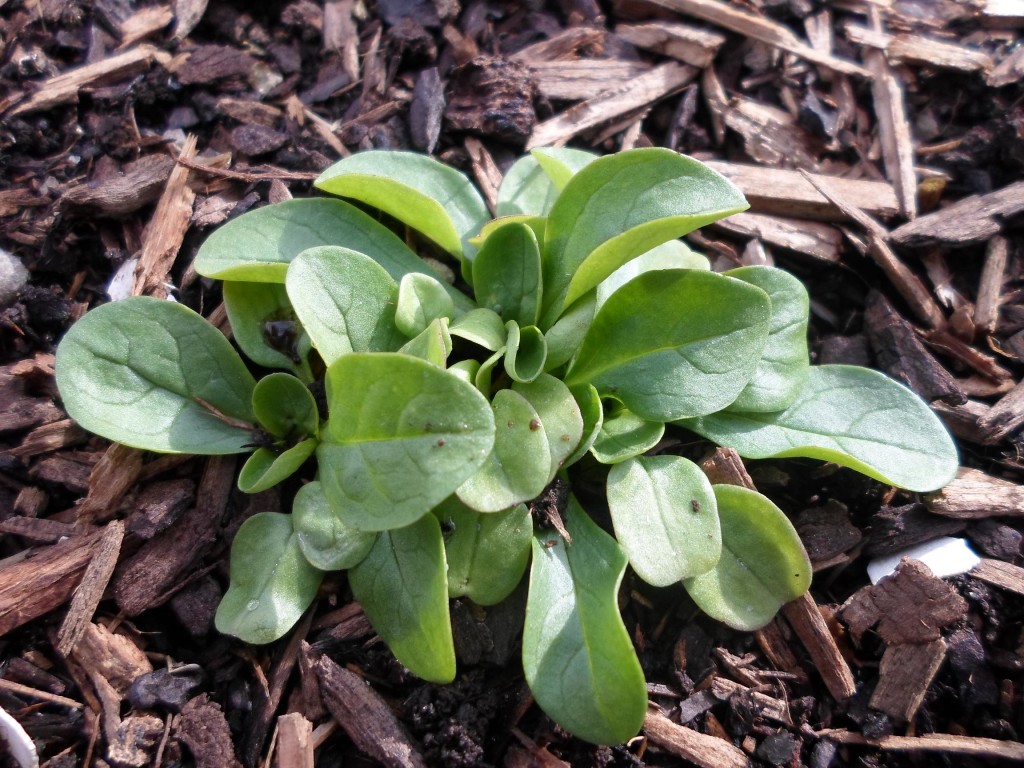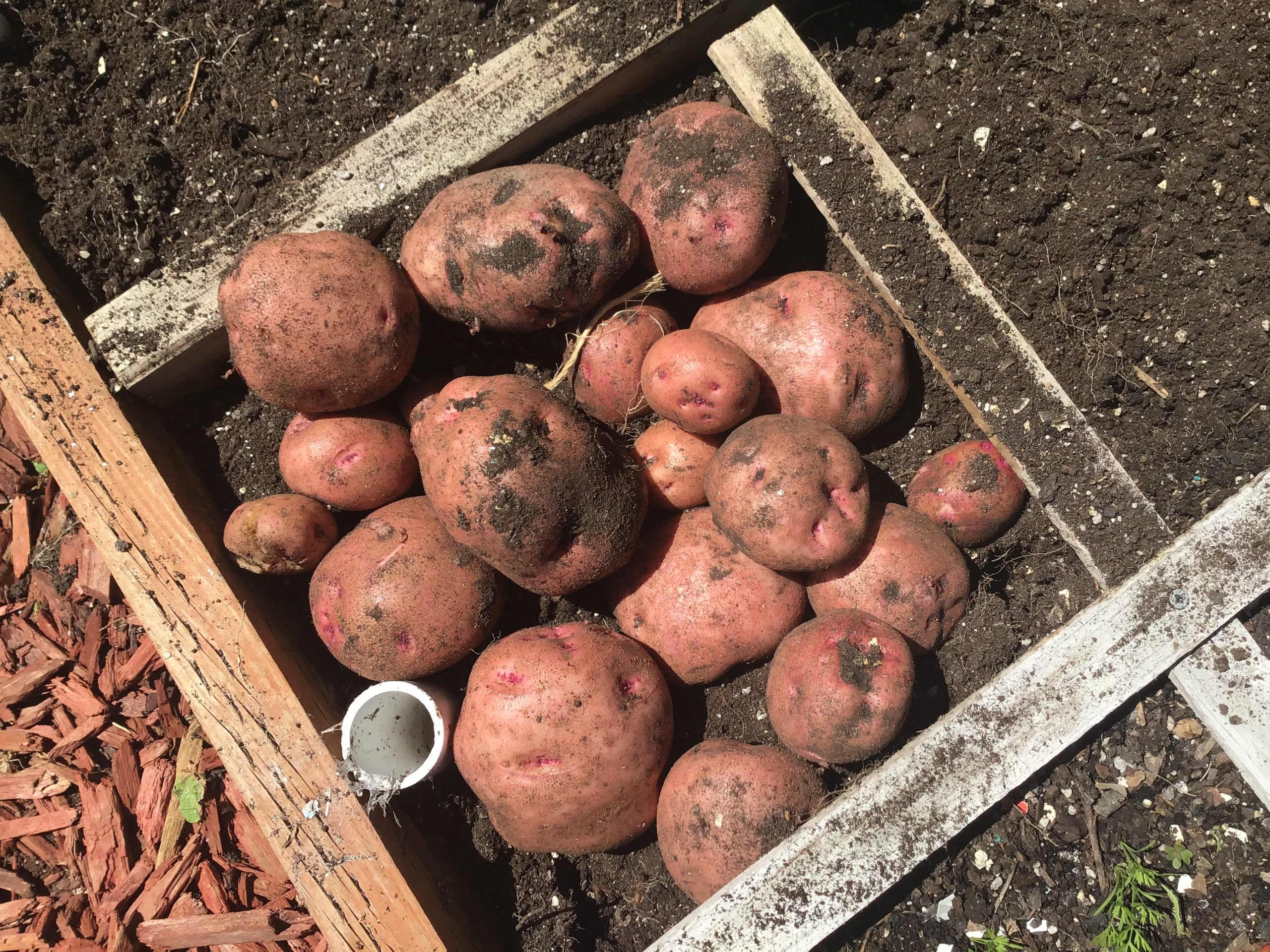 I’ve begun the process of closing my compost bins down for the year. Here is a picture of finished compost from one of my two bins. It’s in perfect shape and will be used for next spring. In the meantime, I’ll be doing nothing but adding compost ingredients during the winter months. This time of year is perfect for the collection of “brown” or carbon ingredients-shredded leaves, branches, pine needles, corn stalks left over from Halloween decorations, etc. After filling both of my bins up with material this week, I’ll have a lot of leftover things-especially leaves. I’ll cover these bags of leaves with a tarp to keep out moisture. Come next spring I’ll use them to sell to people attending my gardening workshops when there is little of the brown ingredients readily available. Everybody wants to start making compost at that time. I won’t water any of my compost bins from this time forward but will only concentrate on adding material. If you water them in like you normally do in the spring and summertime, the bins become little ice cubes and take a lot longer to get going come springtime. It’s hard to believe that there isn’t one tablespoon of dirt in this finished compost. It’s so easy. And it’s the best fertilizer you’ll ever use-all from free ingredients.[ois skin=”below post”]
I’ve begun the process of closing my compost bins down for the year. Here is a picture of finished compost from one of my two bins. It’s in perfect shape and will be used for next spring. In the meantime, I’ll be doing nothing but adding compost ingredients during the winter months. This time of year is perfect for the collection of “brown” or carbon ingredients-shredded leaves, branches, pine needles, corn stalks left over from Halloween decorations, etc. After filling both of my bins up with material this week, I’ll have a lot of leftover things-especially leaves. I’ll cover these bags of leaves with a tarp to keep out moisture. Come next spring I’ll use them to sell to people attending my gardening workshops when there is little of the brown ingredients readily available. Everybody wants to start making compost at that time. I won’t water any of my compost bins from this time forward but will only concentrate on adding material. If you water them in like you normally do in the spring and summertime, the bins become little ice cubes and take a lot longer to get going come springtime. It’s hard to believe that there isn’t one tablespoon of dirt in this finished compost. It’s so easy. And it’s the best fertilizer you’ll ever use-all from free ingredients.[ois skin=”below post”]
Author Archives: Jim
Fall salad
 When Labor Day weekend hits the state of Utah, it marks the end of the garden season for many of us. Here we are in the first week of November and my garden looks like early spring. Salad greens pulled tonight included a cut-and-come again lettuce, spinach, chard, and mizuna. We added a just ripened tomato, black beans, fresh carrots, and a shunkyo radish, along with croutons, blackened chicken, cheese, hard-boiled eggs, and fresh ground pepper. We will be able to have a different tasting salad every night between now and the end of February. Protecting those gardens in zone 6 with plastic and row covers is the way to do it. I’ll be having a winter garden class in the first week of December. I hope to be able to show everyone in attendance how easy this is to do and become truly self-sufficient.
When Labor Day weekend hits the state of Utah, it marks the end of the garden season for many of us. Here we are in the first week of November and my garden looks like early spring. Salad greens pulled tonight included a cut-and-come again lettuce, spinach, chard, and mizuna. We added a just ripened tomato, black beans, fresh carrots, and a shunkyo radish, along with croutons, blackened chicken, cheese, hard-boiled eggs, and fresh ground pepper. We will be able to have a different tasting salad every night between now and the end of February. Protecting those gardens in zone 6 with plastic and row covers is the way to do it. I’ll be having a winter garden class in the first week of December. I hope to be able to show everyone in attendance how easy this is to do and become truly self-sufficient.
[ois skin=”below post”]
Claytonia
 This is a great tasting gem! Also known as miners lettuce because the early California gold miners ate it on the way out west. I think it’s actually categorized as a weed. It’s amazingly productive and keeps coming back all winter or spring. It goes to seed in warm weather but is a great addition to your winter salad mixes. In the square foot garden you plant 9 of these per square. A little later in the year these start to grow a small, edible white flower. You’re guests will probably never know what this is in your salads as you entertain during the winter months, but they will certainly love it.
This is a great tasting gem! Also known as miners lettuce because the early California gold miners ate it on the way out west. I think it’s actually categorized as a weed. It’s amazingly productive and keeps coming back all winter or spring. It goes to seed in warm weather but is a great addition to your winter salad mixes. In the square foot garden you plant 9 of these per square. A little later in the year these start to grow a small, edible white flower. You’re guests will probably never know what this is in your salads as you entertain during the winter months, but they will certainly love it.
[ois skin=”below post”]
Love this
 Another delicious winter crop-Mache, or better known as corn salad in the states, is easy to grow and it comes up quickly. This will be ready to start cutting in about 2 weeks. In Europe it’s harvested as a whole plant and served in fancy salads. If you find it in high end restaurants in America it’s served the same way. But for the home gardener, you can use it as a cut-and-come again crop. This lengthens the availability of mache significantly for home use. It’s got a different taste-almost a nutty flavor, but it’s something that you’ll love for winter and spring salads. You won’t find it in summer salads because it doesn’t grow in warm weather. It’s categorized as a winter annual.
Another delicious winter crop-Mache, or better known as corn salad in the states, is easy to grow and it comes up quickly. This will be ready to start cutting in about 2 weeks. In Europe it’s harvested as a whole plant and served in fancy salads. If you find it in high end restaurants in America it’s served the same way. But for the home gardener, you can use it as a cut-and-come again crop. This lengthens the availability of mache significantly for home use. It’s got a different taste-almost a nutty flavor, but it’s something that you’ll love for winter and spring salads. You won’t find it in summer salads because it doesn’t grow in warm weather. It’s categorized as a winter annual.
[ois skin=”below post”]
In 148 square feet?
 We’ve had 3 or 4 significant frosts already. I’m getting ready to cover this structure with greenhouse plastic. I’ll only then be using a weighted floating row cover to put over the crops. As we head into winter, this is what’s growing in just 148 square feet of garden space: 20 pounds of potatoes, 108 heads of lettuce, 8 arugula plants, 320 carrots, 117 spinach plants, 36 mizuna plants, 45 claytonia plants, 4 minutina, 24 komatsuna, 27 mache, 80 radishes, 36 beets, 48 turnips, 44 Swissl chard, 9 onions, 36 chives, 16 radicchio, 63 leeks, 2 kale plants, 20 poc choi, 2 parsley plants, 1 rosemary plant, 45 tatsoi, 36 kohlrabi, and 4 plants of cilantro. We’re ready.
We’ve had 3 or 4 significant frosts already. I’m getting ready to cover this structure with greenhouse plastic. I’ll only then be using a weighted floating row cover to put over the crops. As we head into winter, this is what’s growing in just 148 square feet of garden space: 20 pounds of potatoes, 108 heads of lettuce, 8 arugula plants, 320 carrots, 117 spinach plants, 36 mizuna plants, 45 claytonia plants, 4 minutina, 24 komatsuna, 27 mache, 80 radishes, 36 beets, 48 turnips, 44 Swissl chard, 9 onions, 36 chives, 16 radicchio, 63 leeks, 2 kale plants, 20 poc choi, 2 parsley plants, 1 rosemary plant, 45 tatsoi, 36 kohlrabi, and 4 plants of cilantro. We’re ready.
[ois skin=”below post”]
